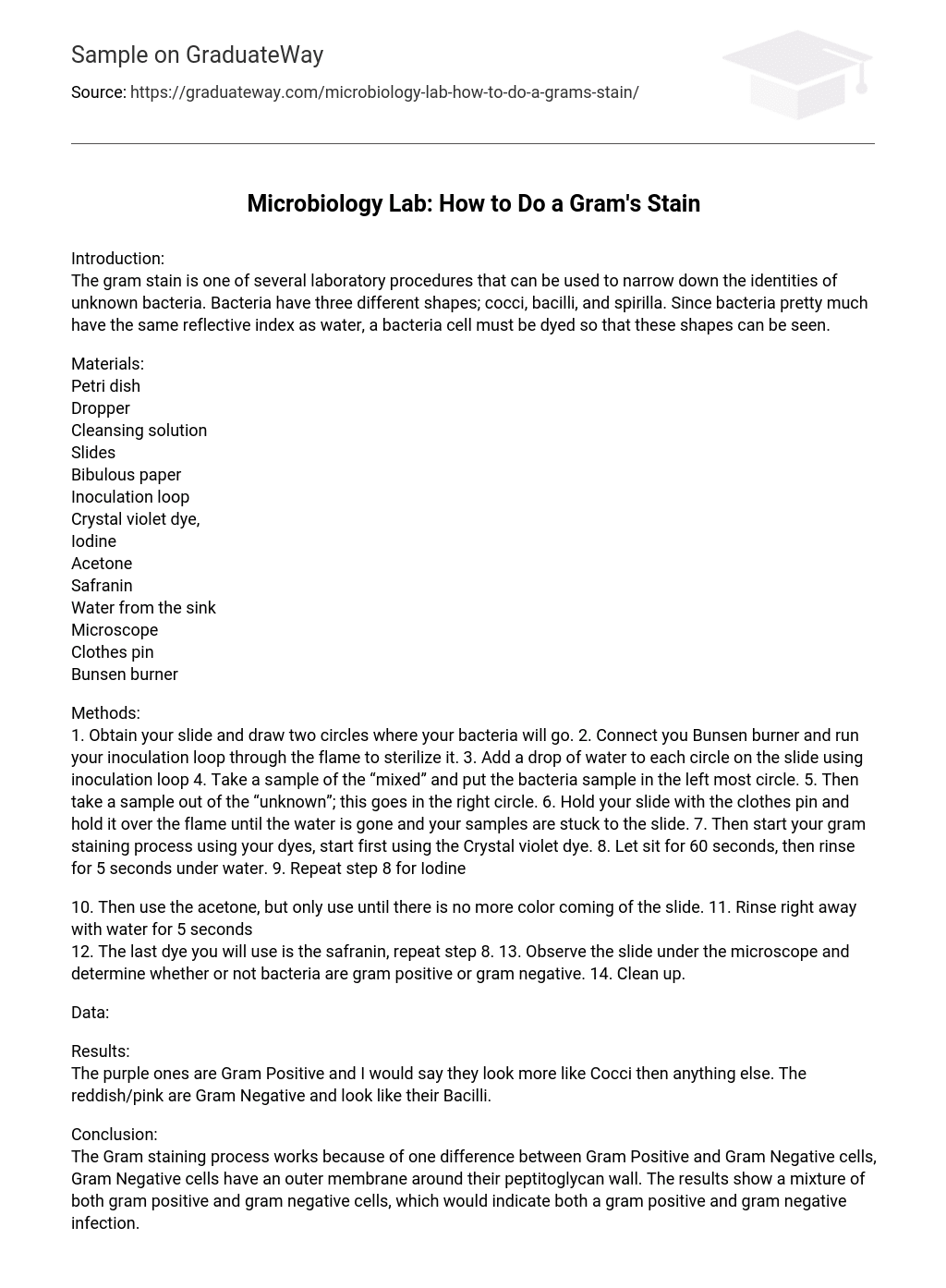Introduction:
The gram stain is one of several laboratory procedures that can be used to narrow down the identities of unknown bacteria. Bacteria have three different shapes; cocci, bacilli, and spirilla. Since bacteria pretty much have the same reflective index as water, a bacteria cell must be dyed so that these shapes can be seen.
Materials:
Petri dish
Dropper
Cleansing solution
Slides
Bibulous paper
Inoculation loop
Crystal violet dye,
Iodine
Acetone
Safranin
Water from the sink
Microscope
Clothes pin
Bunsen burner
Methods:
1. Obtain your slide and draw two circles where your bacteria will go. 2. Connect you Bunsen burner and run your inoculation loop through the flame to sterilize it. 3. Add a drop of water to each circle on the slide using inoculation loop 4. Take a sample of the “mixed” and put the bacteria sample in the left most circle. 5. Then take a sample out of the “unknown”; this goes in the right circle. 6. Hold your slide with the clothes pin and hold it over the flame until the water is gone and your samples are stuck to the slide. 7. Then start your gram staining process using your dyes, start first using the Crystal violet dye. 8. Let sit for 60 seconds, then rinse for 5 seconds under water. 9. Repeat step 8 for Iodine
10. Then use the acetone, but only use until there is no more color coming of the slide. 11. Rinse right away with water for 5 seconds
12. The last dye you will use is the safranin, repeat step 8. 13. Observe the slide under the microscope and determine whether or not bacteria are gram positive or gram negative. 14. Clean up.
Data:
Results:
The purple ones are Gram Positive and I would say they look more like Cocci then anything else. The reddish/pink are Gram Negative and look like their Bacilli.
Conclusion:
The Gram staining process works because of one difference between Gram Positive and Gram Negative cells, Gram Negative cells have an outer membrane around their peptitoglycan wall. The results show a mixture of both gram positive and gram negative cells, which would indicate both a gram positive and gram negative infection.





